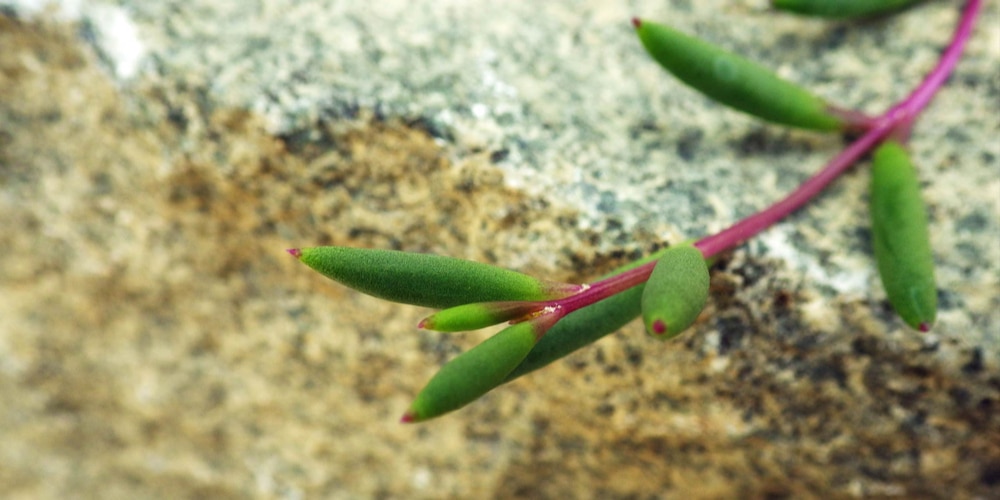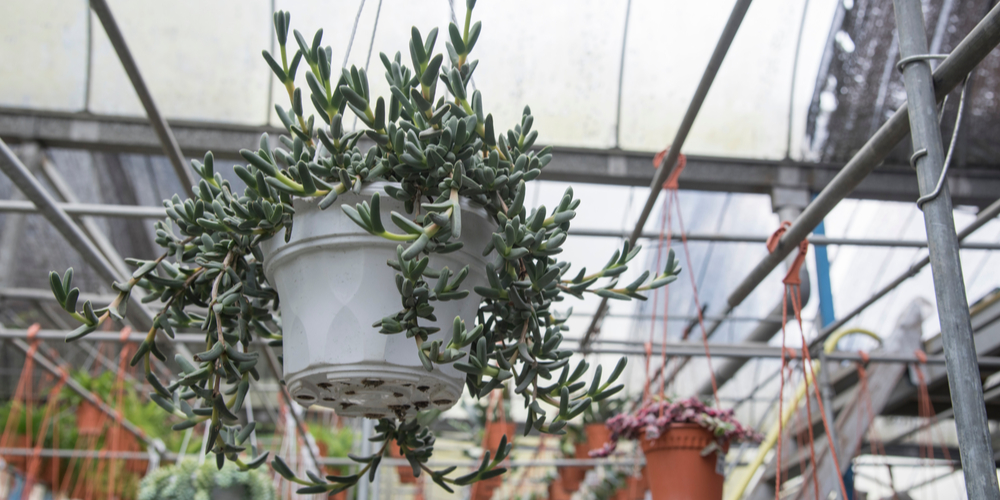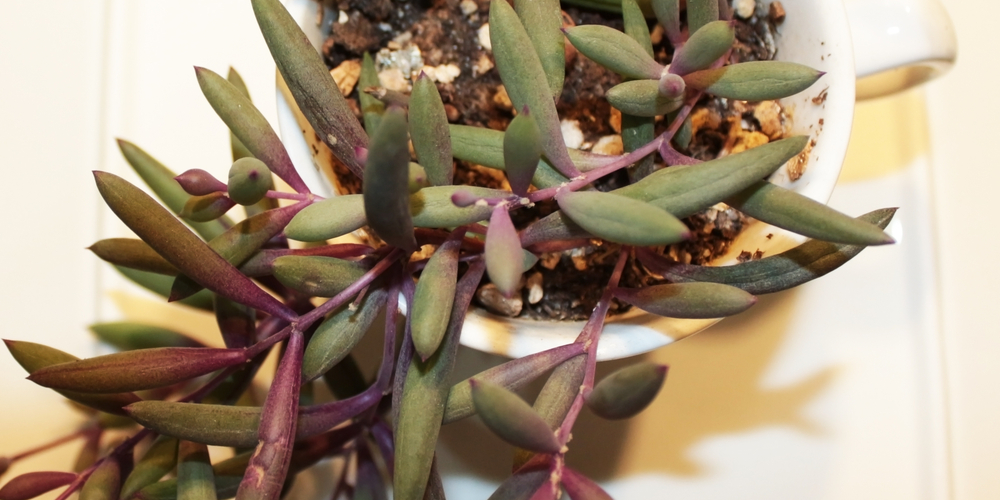The Othonna capensis, otherwise known as the String of Pickles is a trailing succulent plant with elongated leaves and green foliage that turns purple-red when exposed to continuous and direct sunlight.

| Botanical Name | Othonna Capensis |
| Common Name | String of Pickles, String of Rubies, Ruby Necklace |
| Plant Type | Perennial |
| Flower Color | Bright yellow blooms with central disks |
| Size When Mature | 4 to 12 inches |
| Bloom Time | Spring through Fall |
| Sun Requirements | Full Sun, Partial Shade |
| USDA Hardiness Zones | 9 to 11 |
| Soil PH Range | 6.0 to 6.5 |
| Soil Type | Well-drained, sandy or cactus mix |
| Water Needs | Low |
| Native Area | South Africa |
What you Need to Know About Othonna Capensis
A low-growing and trailing succulent plant specimen, the Othonna Capensis has woody stems where oval-shaped leaves appear and are shaped like tiny and smooth pickles. The stems usually appear purple, and the foliage turns the same when exposed to plenty of sunlight.
The String of Pickles is known to produce an abundance of yellow flowers with yellow disks, which adds to the beauty of the plant. Bloom time starts in spring and ends in early fall. Overall, ‘Ruby Necklace’ is easy to grow and care for with the right soil medium and light exposure.
How to Care for Othonna Capensis
Here’s everything you need to know about growing and caring for a thriving String of Pickles
Light
It’s important that your String of Pickles gets enough natural light, or else the leaves will turn a sickly gray or yellow. Outdoors, the succulent thrives as a ground cover or hanging plant in full sunlight to partial sun for around 3 to 6 six hours daily.
As a houseplant, the Ruby Necklace will have to be positioned on a sunny windowsill or an area that gets bright light throughout the day.
You can tell that your O. Capensis is happy when the fleshy leaves are plump and when they have a slight red or purple tinge. If the plant seems thin and is reaching for a light source, move it closer or supplement with a grow light.
Water and Soil Needs
The Othonna Capensis grows well in slightly acidic soil, but more importantly, the growing medium should be well-draining and allow water to pass through. In growing Ruby Necklace you should treat it like a succulent; that is, less water and more light.
For optimal results, you should pot your String of Pickles in a cactus or succulent mix. You can come up with your own mix but make sure to amend with lots of small stones and either pumice or perlite.
Water only once a week or less if the leaves are still plump and healthy- the succulent’s roots are sensitive to a constantly wet medium and will rot quickly.
Temperature Requirements
The String of Pickles is hardy enough to survive outside its recommended growing zones of 9 to 11 as long as you take a few precautions. The succulent likes to stay in a warm and bright environment, so it’s recommended that you bring the plant inside during the winter season.
Fertilizer
The best fertilizer to use on a String of Pickles is a specially formulated cactus or succulent fertilizer that has a low nitrogen content.
‘Ruby Necklace’ is not a heavy feeder and should be fine with feeding at the start of the growing season.
Common Diseases
You’ll want to keep an eye out for common Ruby Necklace pests such as aphids and mealybugs. These insects tend to stick to the plant’s leaves and absorb the succulent’s sap. As a solution, you can hand-pick them off or spray your plants with neem oil or insecticidal soap.
Succulents are prone to root rot and powdery mildew, and the String of Pickles is no exception. Fortunately, this can be prevented by not giving too much water and getting the soil mix right. If the soil is still moist, don’t water it and check again after three to five days.
Othonna Capensis Propagation
Propagating your String of Rubies can be done via stem cuttings. The good news is that the process is relatively easy, and the cuttings easily develop roots in a short time.
Inspect your String of Pickles and look for healthy specimens for propagating. The stems can be anywhere between 3 to 5 inches and have several leaf nodes. Use sharp scissors or small garden shears and sterilize them before making the cuts. Once removed from the mother plant, take away the lower leaves to expose the nodes and either put them in a container with succulent soil mix or a glass of water.
Keep the soil moist by spraying, or the lower nodes submerged in water to encourage roots to form. After a few weeks to a month, you’ll notice new growth, and you can then transplant to a new pot or its final home and treat it as a new String of Pickles.
Related Article: String of Needles

